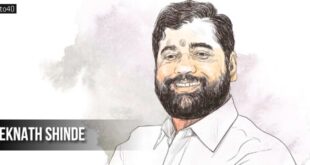 John Craig Venter (born October 14, 1946, Salt Lake City) is an American biologist and businessman. He began his academic career at a community college, College of San Mateo (California), after enlisting in the navy and serving a tour of duty during the Vietnam War. On returning, he received his bachelor’s degree in biochemistry in 1972, and his Ph.D. in physiology and pharmacology in 1975, both from the University of California, San Diego. After working at the State University of New York at Buffalo, he joined the National Institutes of Health in 1984.
John Craig Venter (born October 14, 1946, Salt Lake City) is an American biologist and businessman. He began his academic career at a community college, College of San Mateo (California), after enlisting in the navy and serving a tour of duty during the Vietnam War. On returning, he received his bachelor’s degree in biochemistry in 1972, and his Ph.D. in physiology and pharmacology in 1975, both from the University of California, San Diego. After working at the State University of New York at Buffalo, he joined the National Institutes of Health in 1984.
Early life
Venter was born in Salt Lake City, Utah. In his youth, Venter did not take his education seriously, preferring to spend his time on the water in boats or surfing. According to his biography, A Life Decoded, he was said to be never a terribly engaged student, having Cs and Ds on his eighth grade report cards. Acording to Time Magazine, it was not always evident that Venter would become a trans formative figure, particularly when he was a boy.
Although being against the Vietnam War, Venter was drafted and enlisted in the United States Navy where he worked in the intensive care ward of a field hospital. Being confronted with wounded, maimed, and dying soldiers on a daily basis instilled in him a desire to study medicine — although later on he switched to scientific medical research.
Education
Venter graduated from Mills High School and began his college career at a community college, College of San Mateo in California. He received his B.S. degree in biochemistry in 1972, and his Ph.D. degree in physiology and pharmacology in 1975, both from the University of California, San Diego. At UCSD, he studied under biochemist Nathan O. Kaplan, and married former Ph.D. candidate Barbara Rae. After working as a professor at the State University of New York at Buffalo, he joined the National Institutes of Health in 1984. In Buffalo, he divorced Dr. Rae-Venter and married his student, Claire M. Fraser, remaining married to her until 2005.
Discovery
While at the NIH, Venter learned of a technique for rapidly identifying all of the mRNAs present in a cell and began to use it to identify human brain genes. The short cDNA sequence fragments discovered by this method are called expressed sequence tags (ESTs) a name coined by Anthony Kerlavage at The Institute for Genomic Research. The NIH initially lead an effort to patent these gene fragments, of which Venter coincidentally and controversially became involved. The NIH later withdrew the patent applications after public outcry. Subsequent court cases declared that ESTs were not directly patentable.
Human Genome Project
Venter was passionate about the power of genomics to radically transform health care. Venter believed that shotgun sequencing was the fastest and most effective way to get useful human genome data. The method was controversial, however, since some geneticists felt it would not be accurate enough for a genome as complicated as the human. Frustrated with what Venter viewed as the slow pace of progress in the Human Genome project, and unable to get funds for his ideas, he sought funding from the private sector to found Celera Genomics. The goal of the company was to sequence the entire human genome and release it into the public domain for non-commercial use in much less time and for much less cost than the public human genome project. The company planned to monetize their work by creating a value added database of genomic data that users could subscribe to for a fee. The goal consequently put pressure on the public genome program and spurred several groups to redouble their efforts to produce the full sequence. DNA from five demographically different individuals was used by Celera to generate the sequence of the human genome; one of them being Venter. In 2000, Venter and Francis Collins of the National Institutes of Health and U.S. Public Genome Project jointly made the announcement of the mapping of the human genome in 2000, a full three years ahead of the expected end of the Public Genome Program. The announcement was made along with US President Bill Clinton, and U.K. Prime Minister Tony Blair. Venter and Collins thus shared an award for “Biography of the Year” from A&E Network. Celera published the first Human Genome in the Journal Science, and was soon followed by a Human Genome Project Publication in Nature. Despite some claims that shotgun sequencing was in some ways less accurate than the clone-by-clone method chosen by the Human Genome Project, the technique became widely accepted by the scientific community and is still used today.
After completing the Human Genome, and releasing it into the public domain, Venter was fired by Celera in early 2002. According to his biography, Venter was ready to leave Celera, and was fired due to conflict with the main investor, Tony White, that had existed since day one of the project. Venter writes that his main goal was always to accelerate science and thereby discovery, and he only sought help from the corporate world when he couldn’t find funding in the public sector.
Current Work
Venter is currently the president of the J. Craig Venter Institute, which conducts research in synthetic biology. In June 2005, he co-founded Synthetic Genomics, a firm dedicated to using modified microorganisms to produce clean fuels and biochemicals. In July 2009, ExxonMobil announced a $600 million collaboration with Synthetic Genomics to research and develop next-generation biofuels. Venter used his sloop, Sorcerer II, in the Global Ocean Sampling Expedition to help assess genetic diversity in marine microbial communities.
 Kids Portal For Parents India Kids Network
Kids Portal For Parents India Kids Network






